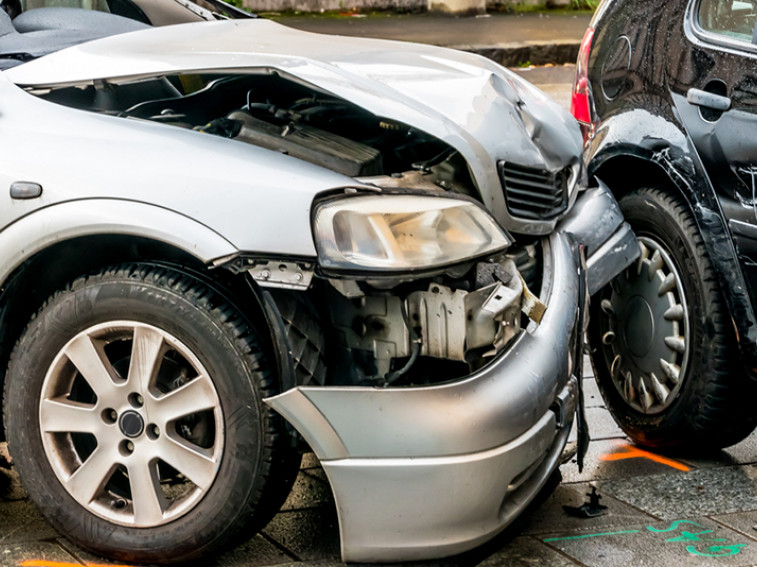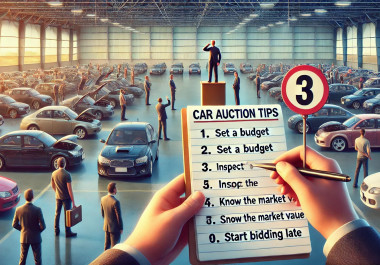You’ll already be aware that salvage cars make up a crucial part of our business here at Raw2k. In fact, most of our stock of auction cars is made up entirely of used, seized, and salvage cars. While used and seized cars are fairly self-explanatory, the definition of salvage cars isn’t quite as immediately obvious. Essentially, it’s another name for an insurance write-off – so here’s everything you’ll need to know about them.
When Will Insurance Companies Write Off A Vehicle?
There can be all sorts of circumstances in which insurance companies will write off a vehicle. Obviously the most common cause is that it’s been involved in a collision of some kind, but flood or weather damage are amongst the other occasional factors. Whatever the case, a car is defined to be a write-off if the insurer decides that the cost of its repairs exceed its total worth. This is, incidentally, where we get the phrase ‘totalled’ from. Generally, this damage threshold is around 75-90%.
Once a car hits this damage threshold and written off, it’s then issued with a salvage title by the insurer. There are four different salvage categories – it’s worth noting that two of them have undergone a slight name change in the last few months.
The different salvage categories are:
- Category A
- Category B
- Category S (formerly Cat C)
- Category N (Formerly Cat D)
So, let’s explore them in a little more detail!
What is a Category A Car?
Non-repairable: Strictly for scrap only, these are cars that have suffered such complete and catastrophic damage that they are unfit for repair.
What is A Category B Car?
Non-repairable: Sometimes known as break cars, Cat B cars haven’t suffered quite the same level of extreme catastrophic damage as Cat As. However, Cat Bs are still very badly damaged, and still beyond repair. The main difference is that parts can legally be salvaged from Category Bs, and recycled if they’re in a repairable condition. This means that Category B cars are often bought by car breakers and scrap dealers for their parts and metal.
What is A Category S Car?
Repairable: Formerly known as Category C cars, this class was renamed after an update to the legal salvage code in October 2017. They’re now called Category S Cars. An easy way to remember it is that the S stands for structural, as Cat S cars will have received notable structural damage to its chassis. This means that often – but not necessarily – a typical Cat S car will have received heavy general damage, but it can still be repaired and re-sold. Most often this is done by professional mechanics, dealers or private individuals, who will repair it and either sell it on or return it to the road once it’s in a legally safe condition.
What is A Category N Car?
Repairable: Category D cars, as they were once known, were also renamed after the change in the official salvage code. They’re now referred to as Category N Cars. The N is for ‘non-structural’ – the damage suffered by Cat N cars is generally more superficial than those in other categories, and might cover cosmetic or minor mechanical faults. However, the updated salvage code does make a point of mentioning that even though Category N cars won’t have had their core safety structures damaged, safety-critical parts might still be missing or damaged – like components of their steering, for example.
Like Category N cars, these can still be bought by car repairers, dealers or private individuals (especially the latter) for repair and return to the road. Because of their relatively low damage, Category N cars are often given centre stage in online car auctions.
Why Were Cat C And Cat D Cars Renamed?
It’s all to do with the official Motor Salvage Code of Practice, which is produced by the British Association of Insurers. On the 1st of October 2017, a revised version of it came into effect. It made a number of changes to the existing code, but the most significant one was to replace Category C and D cars with Categories S and N. It’s a simple change, but a significant one – now, the categories focus not on whether it’s economically viable to repair a vehicle (as the old ones did), but more about whether such repairs are actually feasible in the first place.
This is arguably more helpful to both buyers and sellers, as different people can have their own opinions on whether repairs are ‘worth it’, based on what they have planned for the car.
Should You Buy A Category S Car?
Once, the question was “should you buy a Category C car”, but obviously we’ve had to update it! As you can see from a quick glance above, cars that are classed as Cat C or Cat N are going to be less heavily damaged than those in other categories. Here at Raw2k, we’d say that if a car has been properly repaired, there’s no reason you shouldn’t buy it in an online car auction. After all, it costs less to buy than a brand-new model, so it’s mostly a matter of just making sure the financial side of things balances out.
It’s worth bearing in mind that Category S or Category N salvage titles can even be given to cars with relatively low damage. A Category S title might be given to a ten year-old vehicle which has suffered a minor bump in a car park, for example. Even if the damage is small-scale, if the repair costs exceed the value (which they might do easily, given its age or condition), it can then be written off when it might otherwise be deemed to be in relatively good condition. Hopefully now you can already see why it was necessary to alter the Salvage Code of Practice!
When it comes right down to it, deciding whether or not to buy a Category S or a Category N car comes down to unemotional economics. Whatever you intend to do with the car you’ll first have some book-balancing to do. Exactly how much depends on you! Here’s what you’ll need to be aware of, in either case.
If you intend to drive it yourself:
- Make sure you’re aware of the costs of bringing the car back to serviceable condition, or familiarise yourself with some rough estimates.
- Before it can be declared legally safe to go back on the road, you will need to have it checked by a qualified mechanic – preferably one employed by the AA or RAC. This may be expensive, but as well as giving you important information you’ll need to know, it may also cover you legally if a later problem becomes apparent with the car. Most insurers will insist on this report before they’ll cover a Cat S or Cat N car, so make sure you’re prepared to foot the bill!
- Some insurers won’t consider covering it even in these circumstances, or charge higher premiums, so remember that your choice of insurers might well be relatively narrowed compared to usual.
If you intend to sell it
- You’ll need to work out your profit margins well in advance – if you can’t see for certain that there’s a profit to be made, it makes the exercise redundant!
- As it was cheaper to buy, remember that the car might well be even less to sell on, so you’ll need to also take this into account.
- Cars that are particularly rare or hard to find elsewhere can give you good mileage (if you’ll pardon the pun) for resale, even if they’re damaged in the first instance.
In any case, here at Raw2k we’d always advise finding out exactly what’s wrong with it before you buy, and what repairs it’s had done previously. Happily, you’ll find that every vehicle in our own online car auctions – whether it’s used, seized or salvage cars – all have detailed information set out for you at a glance, so you waste no time in working out whether it’s worth your bid.
We’ve got some top brands in stock too – why not take a look at some of our car auctions, or our Ford auction vehicles, and see what you can find?




